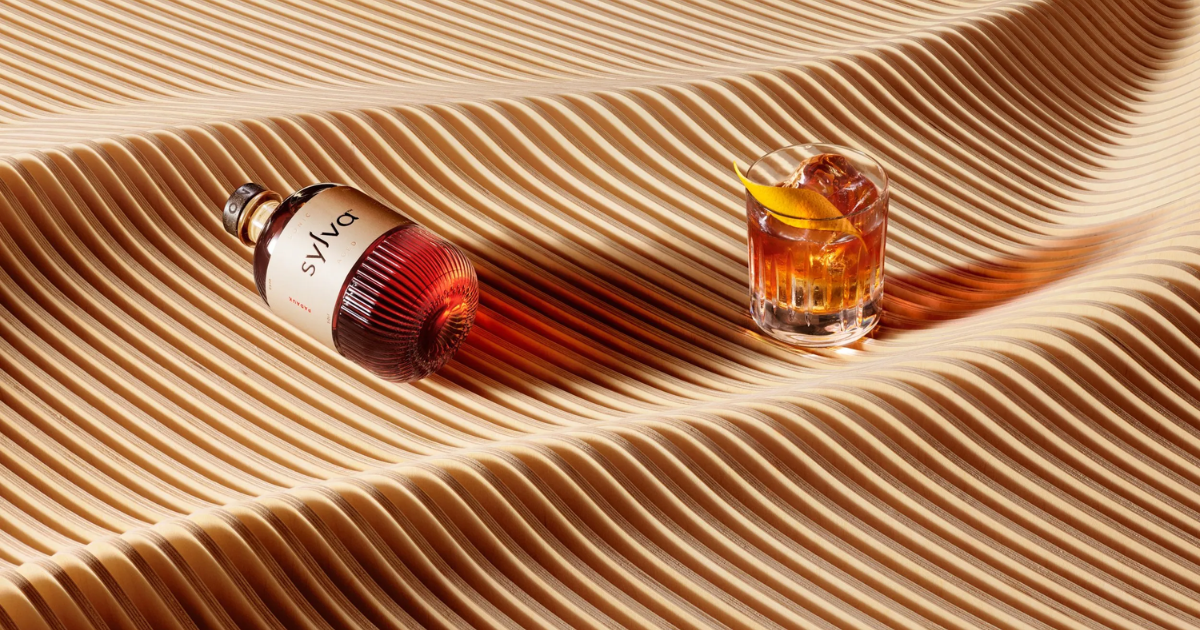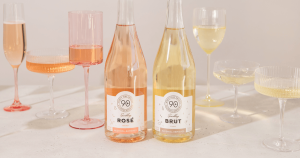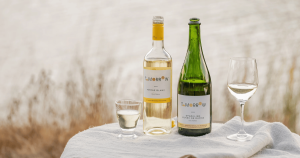For centuries, barrel aging has been essential to developing the complex flavors of dark spirits like whiskey and rum. But what if wood itself could be the star of the show? That’s the idea behind Sylva, the latest venture from Ben Branson, visionary founder of Seedlip and Seasn. Sylva isn’t a replica of any alcoholic drink. Instead, it’s a new kind of non-alcoholic dark spirit built from wood and grain. I got a firsthand look at Branson’s process during my visit to Sylva HQ on his farm outside of London. Here’s what I learned.
A Modern Lab Rooted in History
Tucked behind a wrought iron gate at the end of a long driveway, Sylva HQ feels more Downton Abbey than mad scientist’s lair at first glance. But step inside, and you’re immediately surrounded by countless bottles of non-alcoholic spirits, glossy coffee table books devoted to—what else?—trees, and an array of stainless steel machinery.
It’s a marriage of history and modernity. Branson built Sylva HQ on land with a history stretching back a thousand years. “Just 100 meters outside, there are the grounds of a Benedictine monastery that was built in the 1100s,” he said, gesturing toward a large rock beside his desk. “This is from those foundations.” The site once housed a mill that likely produced ale and experimented with distillation. Now, it serves as the creative hub where Branson and his team extract deep, layered flavors from wood.
Exploring the World of Wood
Sylva’s innovation starts with wood selection. At the heart of their lab is a table covered in over 50 different types, from the familiar (oak, ash, walnut) to the unexpected (coconut wood, pink ivory, roasted cork, and panga panga). “We know that 70% of the flavor in dark alcoholic spirits comes from contact with wood,” Branson explained. But while whiskey primarily relies on oak, for example, Sylva taps into a far broader palette.
Their first release, Sylva Padauk, is based on four key woods:
- Padauk: A striking red wood from West Africa with natural roasted pepper, smoked paprika, and a touch of salinity.
- Quercus Alba (American White Oak): Sourced from Buffalo Trace before being used in Scotland for single malt.
- Red Oak: Harvested from Branson’s own forest.
- Olive Wood: For additional depth.
The team carefully chips, roasts, and chars these woods to unlock their flavors. “We literally barbecue it,” Branson says of the Padauk wood. This caramelization intensifies its rich character.
Crafting a Wood-Derived Non-Alc Spirit
Sylva doesn’t just steep this wood in water. It extracts flavor using multiple techniques, including:
- Vacuum distillation: Used to capture delicate aromas.
- Gravity percolation: Running liquid through layers of wood to absorb its essence.
- Sonic aging: A technique that uses oxygen, pressure, heat, and ultrasound to replicate the maturation process of barrel aging in a fraction of the time.
Instead of relying on chili peppers for that characteristic alcohol burn, Sylva’s technique creates a warmth that builds in the throat and chest rather than lingering on the tongue. Branson explained, “Chili really just stays on your tongue and builds to being more hot, overpowering.” Instead, the focus is on mouthfeel and depth, ensuring that the spirit feels satisfying to sip neat.
Rye is the chosen grain for Padauk, adding a nutty, spicy backbone. “There doesn’t seem to be a lot of grain focus in non-alcoholic spirits,” Branson observed. But manipulating wood remains his primary focus. “For us, having a brilliant wood program and a maturation process ensures we can fully deliver on what wood can bring to a liquid beyond tasting woody or oaky.”
The Final Result
After a tour of Ben’s lab—and even the forest where some of his woods come from—we sat down for a bit of Sylva Padauk, neat. The final product is copper-hued, complex, and warming. It delivers flavors of caramel, chocolate cake, spice, and more, but without the sweetness often found in non-alcoholic dark spirits. As someone who has tried over 100 non-alcoholic spirits, I can confidently say: there’s nothing quite like it. With wood at the center of the process, Ben is creating a dark spirit alternative with an identity all its own.






